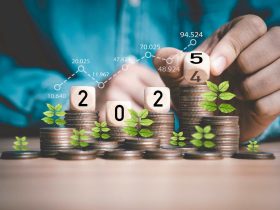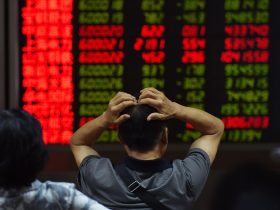The U.S. economy has something in common with baseball’s World Series, which finally got under way on Oct. 27. The series pits two good, but not great teams against each other: the Texas Rangers and the Arizona Diamondbacks, who made it to the Fall Classic by parlaying their Wild Card finishes through the postseason playoffs to their respective league championships.
Good, but not great, also describes the initial estimate of third-quarter gross domestic product, which showed a 4.9% seasonally adjusted annual rate of increase, after adjusting for inflation. That topped the consensus of economists’ forecasts, which called for a robust showing in the low-4% range, and more than twice the 2.1% pace in the second quarter.
Still, the latest quarter’s results were boosted by certain factors not likely to be repeated, and others that might detract from growth. Moreover, the data show that, while the Federal Open Market Committee is certain to hold interest rates steady at this coming week’s policy meeting, inflation remains well above its 2% target. Rather than the cuts the interest-rate markets are pricing in for 2024, another increase would be justified in the absence of substantial further progress toward that goal.
More than half of third-quarter growth came from consumer spending, which accounted for 2.7 percentage points of the 4.9% GDP tally, according to a breakdown by Macquarie North America economists David Doyle and Neil Shankar. We were spending on experiences, like Taylor Swift and Beyoncé concerts, including travel, hotels, and of course, the merch. But they noted that the splurge came out of savings, as real disposable spending contracted for three consecutive months through August.
Residential construction added just 0.1 percentage point to the third-quarter tally, while the contribution from nonresidential business investment was nil—the weakest showing since the third quarter of 2021. Government spending kicked in 0.8 percentage point. Together, those components comprise domestic final sales and total 3.6 percentage points. Another 1.3 percentage points came from inventory accumulation, while the trade balance trimmed a tiny 0.1 percentage point to round out the GDP tally.
The point is that while 4.9% GDP growth is great, 3.6% growth in domestic final sales excluding inventory and trade swings is merely good.
The real value of the GDP report is in what it implies for the quarter ahead, writes Steven Blitz, chief U.S. economist for TS Lombard. For the final three months of the year, he sees growth slowing to a 1.5% annual rate as fiscal policy’s tailwind abates and the Fed’s rate hikes begin to bite.
In nominal terms, unadjusted for inflation, the U.S. economy grew at an 8.5% annual rate in the latest quarter, including 3.5% growth in the so-called GDP price deflator. Measured from a year ago, nominal GDP grew at a still-steamy 6.3% annual rate.
With nominal GDP growing at the fastest rate since the mid-1980s, the Fed should be looking to raise its policy rate further, says Joseph Carson, former chief economist for AllianceBernstein. While the FOMC is certain to stand pat this week, “history shows it takes a fed-funds rate equal to or above nominal GDP to slow the economy, and the current target is still [0.75 percentage point] below” the year-over-year rate, he wrote on his LinkedIn blog.
The economy’s current growth and Fed policy makers’ intent to lower inflation would make the interest-rate policies from the mid-1980s to the mid-1990s, when rates were kept at or above nominal GDP, more appropriate. By contrast, interest rates in the inflationary period from the late 1960s through the 1970s were kept below nominal GDP, writes Martin Barnes, former chief economist of BCA Research, in the November Bank Credit Analyst.
The disinflation era began when Paul Volcker was named Fed Chairman in 1979. By the end of 1980, the Fed had boosted the fed-funds rate to 22%, far above the 12.4% inflation rate, resulting in a deep recession but ushering in a multidecade period of disinflation.
That changed after what Barnes termed the Great Financial Recession, which he dates from 2007 to 2020. The Fed kept short-term rates at zero from 2010 to 2015 while nominal GDP averaged 4%. But inflation remained surprisingly subdued owing to moderate growth and wage pressures kept in check by workers’ worries about job security.
Central banks talk tough about getting inflation back to 2% “but talk is cheap, especially when economic growth is holding up better than expected,” Barnes writes.
The Fed’s forecast of a soft landing in 2024 and median expectations for 2025 of 2.2% inflation, real growth of 1.8%, and a 3.8% fed-funds rate is a “fairy tale outcome,” Barnes writes. He suspects the inflation target will give way and a new 3% to 4% inflation range will be tolerated eventually.
Moderately higher inflation might be welcomed in some quarters, especially by heavily indebted governments happy to see the real burden of their debts eroded. But he thinks the bond market and the public won’t have much tolerance for inflation above 5%, which would leave little or no real return from long-term Treasuries. “From an investment perspective, I am happy to reside in short-duration fixed-income assets until economic risks subside,” Barnes concludes.
Write to Randall W. Forsyth at randall.forsyth@barrons.com
Read the full article here













Leave a Reply